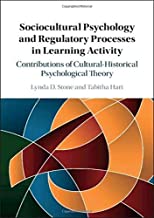Editor: Edited by Jonathan Pogash with Rick Rodgers. Photography by Ben Fink
Publisher: Wiley Publishing – 338 pages
Book Review by Nano Khilnani
This 68th edition of the world-renowned Mr. Boston Official Bartender’ Guide has numerous recipes for all kinds of drinks. About 150 of them are completely new. And unlike other books on creating cocktails and other drinks, this one contains an intelligent Introduction and an insightful section called Bar Basics that add great value to this guide. This is not just a collection of recipes for drinks, even though it has numerous new ones added.
The Introduction mentions that this “little red book,” first written by the well-known bartender Leo Cotton three quarters of a century ago (right after the lifting of the Prohibition) has endured because he thoughtfully and meticulously created cocktails with genuine ingredients, not substitutes. And he did his work with passion. That 11 million copies of this book have been sold over the last 75 years is not just a matter of chance.
Leo Cotton, who was a purchasing agent for the Mr. Boston liquor brand, wrote his first book and subsequent editions with great care, keeping in mind always the need by the public for authenticity and accuracy in using the right components for making excellent cocktails.
Keeping that in mind, the current and latest edition of this classic book for bartenders and cocktail enthusiasts was prepared by Jonathan Pogash and Rick Rodgers “after almost one year of tedious work,” they write. In compiling and updating the material for this great book, they enlisted the expert assistance of four old time Boston bartenders “whose background and experience make them authorities on the correct ingredients to be used and the proper manner of serving cocktails.”
To give you an overview, here’s a stat on the spirits business in the U.S. The editors Pogash and Rodgers cite statistics from the Distilled Spirits Council of the United States that show 2010 sales of 190.7 million cases of sprits totaling $19.1 million. The council expects sales of spirits to grow in 2011 despite a weakening economy. It makes one wonder why.
The editors point out that Dale DeGroff is considered the ‘great granddaddy of cocktails’ today, who inherited the title from “Professor” Jerry Thomas in the nineteenth century. De Groff has spent more than two decades traveling around the country educating barmen and “mixologists.” DeGroff has these “Five Commandments for Bartenders”:
1. Set the tone: develop rapport with the guest, even if he is not cordial with you;
2. Be observant: sharpen your ability to listen to your guest, determine if a conversation with him is welcome or not, but make sure his visit to your bar is a success;
3. Know your recipes: there are some 150 drinks that make up about 90 percent of your customers’ requests and ask yourself repeatedly if you’re really putting the right ingredients. Be humble if your customers point out your mistakes – they know a thing or two about their cocktails;
4. Perfect your craft: you are on stage, so speak well to your customers, as they are observing you. Learn the skills necessary to your work and show some unusual abilities that will be rewarded with higher tips and returning guests;
5.Exude gravitas: the bartender is a source of news and information and is like a local tourist guide, so be helpful to your guests in that regard. Also keep your own cool and prevent arguments between customers from becoming shouting matches.
“Bar Basics” is a section in the book preceding 300-plus pages of recipes that outlines the equipment, tools, glassware, supplies and bottles of spirits needed in a well-stocked bar.
This section also has subsections on techniques on making a large variety of drinks and serving them, determining which and how many drinks to mix based on the number of people expected for an event, how many and what size drinks can be made from different sizes of bottles details of measures such as how many drops make a dash, how many dashes make a half teaspoon, how many teaspoons in a third of an ounce, etc.
Lastly the bulk of the book contains recipes galore. You will find in this section details on what and how much of each ingredient is needed for a variety of drinks using spirits such as brandy, cordials, gin, liqueur, rum, tequila, vodka, whiskey and others. Also frozen and hot drinks, nonalcoholic drinks, eggnogs and punches and last but not least, beer and wine.
This book is an acknowledged “bible” for professional bartenders as well as for those who love to entertain at home by mixing and serving drinks to their friends and guests. No other book on cocktails has earned as much respect nor lasted as long as this one.






